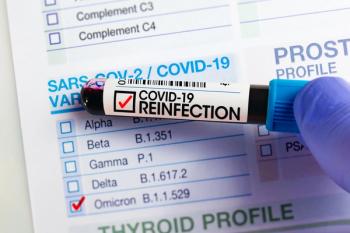
- July 2023
- Volume 89
- Issue 7
A Triple Threat? Changes to 340B May Add to DIR “Double-Dip” Headwinds for Community-Based Pharmacies
Key Takeaways
- DIR involves rebates and discounts affecting pharmacy cash flow, with unpredictable reimbursement adjustments impacting financial planning.
- From January 2024, pharmacies will receive final payment amounts at the point of sale, eliminating year-end adjustments.
Without intervention, this may be the tipping point that causes mass closures of pharmacies.
Wait Remind Me: What is DIR?
Direct and indirect remuneration (DIR) is the federal government’s way of defining and subsequently enforcing the reporting of what a Medicare Part D plan (PDP) receives after drug manufacturers provide rebates to them and pharmacies agree to discounts at the point of sale with an enrollee.1 Knowing what the PDP’s net receipts are is important when setting the partial capitation rates for the PDP. Simply put, the representative for the taxpayer and Medicare trust fund (the government) wants to know what the management vendor is actually paying the pharmacy so that the taxpayer can make sure not to overpay the management vendor.
How Does That Affect Pharmacy Cash Flow?
For many years now, pharmacies have seen a reimbursement number at the point of sale that often does not reflect the actual reimbursement of the claim, but rather a temporary payment amount. This amount is subject to reductions at the end of the year that represent those rebates and pharmacy discounts, and the PDP will then invoice the pharmacy for the balance.
These costs, also called takebacks, clawbacks, true-ups, or DIR payments, have been quite unpredictable and represent hundreds of thousands of dollars in cash payments back to the PDP months after the initial temporary reimbursement amount. This puts the pharmacy in the position of not knowing how much cash it will need on hand at the end of the year—the payment amount back to the PDP is seemingly random, from the pharmacy’s perspective.
Here Comes the DIR Double-Dip
Beginning January 1, 2024, all of those rebates and pharmacy discounts (called concessions) must be reported to the pharmacy at the point of sale.2 No longer will the pharmacy have a temporary amount paid to it that will result in a bill at the end of the year representing those rebates and discounts.
Knowing what the final payment will be is a breath of fresh air for pharmacy managers attempting to run businesses based on buying at one price and selling at another price with a small service fee, because visibility into the buying and selling prices in real time is key to the business.
However, for plan year 2023, pharmacies have been accumulating cash from excess payments that don’t reflect the final amount for which they will have to reimburse the PDP back in early 2024. In approximately 6 months, the 2024 plan year claims will not have that excess payment because the PDP is then required to pay the pharmacy the final amount (no delayed takeback amounts).2 The net effect is ultimately owing money to the PDP from 2023 and significantly lower reimbursement at the outset in 2024—the double-dip effect.
Meanwhile, Pharmaceutical Manufacturers are Accelerating the Demise of 304B Contracts With Community-Based Pharmacies
Speaking of double-dips, pharmaceutical manufacturers have become increasingly disgruntled by participating in 340B programs that provide discounted products to patients who have a prescriber working in a health system, federally qualified health centers, and other entities that provide lots of charity care or undercompensated care. Under this program, manufacturers forfeit very large amounts of potential financial margin, referred to as savings by the pharmacy program participants, so that dollars at those provider entities can be used for other services to benefit the populations they serve in addition to providing better access for uninsured and underinsured patients.3
These 340B manufacturer losses or 340B provider savings (they are same) have grown to more than $50 billion annually, with a doubling every 3 to 5 years over the past decade. Those savings/profits have been shared across the industry, including community contract pharmacies. However, these savings/profits are largely not finding their way to patients in the form of discounted drugs in these arrangements.3
Over the 30-year history of the program, the greatest accelerations have occurred following 2010 guidance from the Health Resources and Services Administration (HRSA), which allowed 340B-qualifying entities to contract with multiple pharmacies. This move generated more savings by extending discounted acquisition of drugs to any pharmacy that their patients use to fill prescriptions within the community. In 2020, the Government Accountability Office produced a blistering report of the program, identifying more than 1500 audit findings, including more than 500 for which there was evidence that both Medicaid and 340B discounts were applied (the other double-dip).4 Manufacturers have responded by imposing means to force 340B entities to have a single pharmacy dispensing discounted drugs.
Will 340B Action By Manfacturers be the Nail in the Coffin?
If community-based 340B contract pharmacies go away, will brand drug dispensing in the community go away with it? Without 340B arrangements with eligible entities, most pharmacies will lose money on dispensing branded prescriptions. 340B has artificially propped up many pharmacies’ dispensing on branded drugs because, under the program, the pharmacy is receiving a flat fee from the 340B-eligible entity and is not subject to buy-sell economics.3 If contract pharmacies go away in the community, at roughly the same time the DIR double-dip cash crunch is occurring, branded dispensing may go away with it.
Manufacturers' Action May Lead to Loss of In-Network Pharmacies
It is also likely that participation in pharmacy networks has been artificially inflated by the 340B program. It is estimated that approximately one-third of all pharmacies participate in 340B.5 However, many of those are also part of large pharmacy chains. With substantially larger margins for community-based pharmacies under 340B arrangements than with the pharmacy benefit managers’ (PBMs) reimbursement, it is quite likely that tens of thousands of pharmacies accepted contracts with poor reimbursement from PBMs to stay in network as aranded rugway to attract patients that would ultimately be 340B transactions. If contract pharmacies no longer have access to 340B arrangements, they will begin to decline increasingly poor reimbursement contracts from PBMs.
A Tough Choice: Lose Branded Drugs, Lose Your Patients, or Lose Your Pharamcy
CVS is already planning to close approximately 10% of its locations,6 and Walgreens is reportedly following suit with hundreds, if not thousands, of locations. Additionally, any independent pharmacy that is dependent on 340B arrangements to cover their losses on all other non-340B prescriber prescriptions will be in a dire situation. Branded drug dispensing and keeping the doors open are getting increasingly difficult for community pharmacies, both with DIR and with the ongoing loss of 340B arrangements. How to serve anyone, let alone patients needing branded drugs, is a question that policy makers are going to be forced to reckon with later in 2023 as election season ramps up.
About the Author
Troy Trygstad , PharmD, PhD, MBA, is vice president of Pharmacy and Provider Partnerships for Community Care of North Carolina, which works collaboratively with more than 2000 medical practices to serve more than 1.6 million Medicaid, Medicare, commercially insured, and uninsured patients. He received his PharmD and MBA degrees from Drake University and a PhD in pharmaceutical outcomes and policy from the University of North Carolina. He also serves on the board of directors for the American Pharmacists Association Foundation and the Pharmacy Quality Alliance.
References
- Medicare Part D – direct and indirect remuneration (DIR). Centers for Medicare & Medicaid Services. January 19, 2017. Accessed June 19, 2023.
https://www.cms.gov/newsroom/fact-sheets/medicare-part-d-direct-and-indirect-remuneration-dir - Reporting estimated remuneration applied to the point-of-sale price. Centers for Medicare and Medicaid Services. October 14, 2022. Accessed June 19, 2023. https://www.cms.gov/files/document/erposamemo508g.pdf
- Msrtin R, Illich K. Are discounts in the 340B drug discount program being shared with patients at contract pharmacies? 2022. Accessed June 19, 2023. https://www.iqvia.com/-/media/iqvia/pdfs/us/white-paper/are-discounts-in-the-340b-drug-discount-program-being-shared-with-patients-at-contract-pharmacies.pdf
- US Government Accountability Office. Drug pricing program: HHS uses multiple mechanisms to help ensure compliance with 340B requirements. December 2020. Accessed June 19, 2023. https://www.gao.gov/assets/gao-21-107.pdf
- Lin JK, Li P, Doshi JA, Desai SM. Assessment of US pharmacies contracted with health care institutions under the 340B drug pricing program by neighborhood socioeconomic characteristics. JAMA Health Forum. 2022;3(6):e221435. doi:10.1001/jamahealthforum.2022.1435
- Khandekar A. CVS to close 900 drugstores in three years to beef up health services. Reuters. November 18, 2021. Accessed June 21, 2023. https://www.reuters.com/business/healthcare-pharmaceuticals/cvs-health-close-stores-record-impairment-charge-2021-11-18/
Articles in this issue
over 2 years ago
Brain Health Watchover 2 years ago
Pet Peeves — Brought To You By The Sassy Pharmacistover 2 years ago
Interactive Case Studiesover 2 years ago
Postnasal Dripover 2 years ago
Expanding Tech-Check-Tech Will Move Pharmacy Into the Futureover 2 years ago
Promoting Medication Safety Improves Health OutcomesNewsletter
Stay informed on drug updates, treatment guidelines, and pharmacy practice trends—subscribe to Pharmacy Times for weekly clinical insights.


















































































































































































































